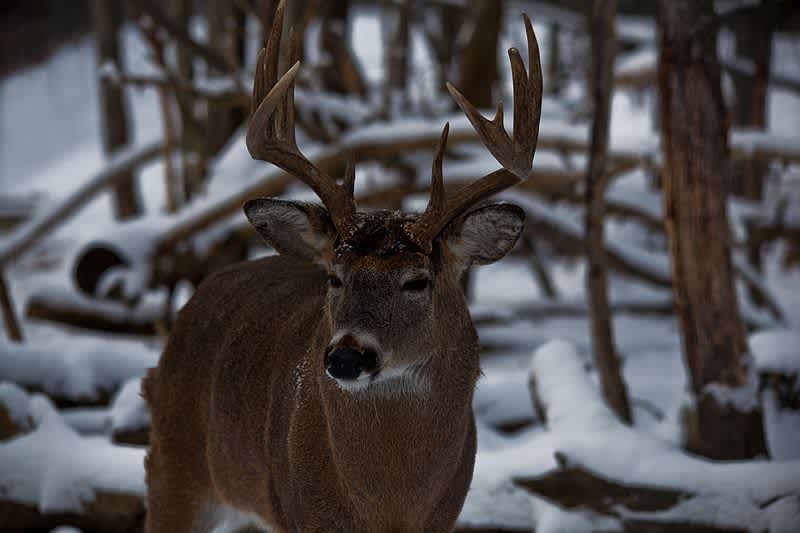Whitetail Overcrowding: Deer Waste Could Affect Winter Habitats
OutdoorHub Reporters 06.04.13

A new study by researchers at Michigan Technological University (MTU) finds that the next problem to befall whitetailed deer may be the most unlikely: their own waste. According to a report published in the Ecological Society of America journal Ecology, the animals’ nitrogen-rich waste may be absorbed by the soil and nearby plants, resulting in less cover.
Deer seek out dense foliage during winter for protection from the elements and to hide from predators. These deeryards of evergreen trees provide the animals with necessary cover and are vital to helping the deer survive the winter. When snow falls, deer can gather in large numbers at these temporary homes, feasting on nuts, leaves, and fruit that were kept safe from the frost. As the whitetail population grew, these habitats became more and more crowded, and waste began collecting in larger numbers.
Researchers took soil samples from the stomping grounds of a northern Michigan deer population and found a strong correlation between the soil’s nitrogen saturation and the species of plants that grew in a deeryard. This is especially true for the eastern hemlock, a long-lived coniferous tree that provides good cover for whitetails.
“Altering the nitrogen availability in a hemlock stand may affect its ability to continue functioning as a deeryard by changing the types of plants that grow there,” said Bryan Murray, one of the study’s co-authors, to MTU. ”High inputs of nitrogen may hasten the transition of hemlock stands to hardwood species that provide scant winter cover.”
The researchers believe that deer waste was not an issue in the past when there were fewer deer to congregate at the deeryards. However, popular deeryards can now play host to 100 or more whitetails per square mile, creating concentrations of deer waste that can jump-start hemlock development. Scientists believe this finding may have negative implications for a sustainable ecosystem. Without the cover of hemlocks, the deer could fall prey to predators or a harsh winter.
Currently, the team of researchers at MTU are further studying the relationship between whitetails and hemlock trees, as well as the deer’s diet.
“Our hope is that by better understanding the links between habitat use and spatial patterning of resources and plants in survivng hemlock stands we can identify sustainable management strategies for this critical resource,” said study co-author Christopher Webster.

